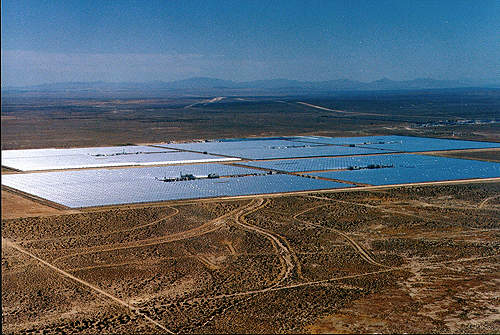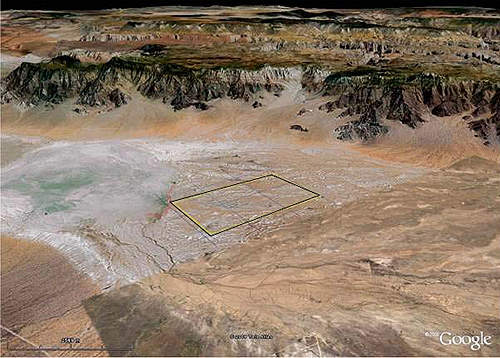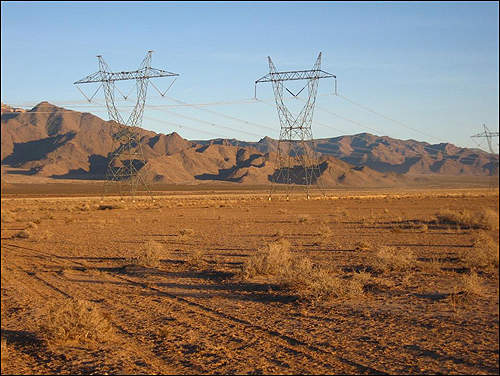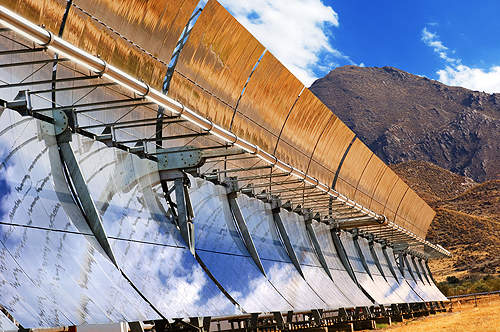Hualapai Valley Solar (HVS) is a 340MW concentrating solar power (CSP) plant under development in Arizona. Located 27 miles north of Kingman and 100 miles south of Las Vegas, the plant will be the world’s largest solar power plant.
The plant will be owned and operated by Mohave Sun Power. Construction of the plant will begin in November 2011 and is scheduled for completion in 2014.
Power generated from the plant will be used by the state of Arizona or other neighbouring states. The plant can store eight hours of energy in a thermal energy storage system that uses molten salts.
The project is estimated to cost over $2bn.
The company is seeking financial assistance for the project under the US Department of Energy Loan Guarantee Programme.
The project is estimated to cost $2bn. It is being developed by Mohave Sun Power LLC is a financier for the project. Part of the project will be financed by the US Department of Energy Loan Guarantee Programme.
The HVS project will employ 1,500 people during construction and 100 more in their operational phase.
HVS project details and construction
The HVS plant will be constructed on a 4,000-acre private land. Arizona was chosen as the preferred site as it renders the highest insolation values compared with any other state in the US.
The proposed plant’s area is relatively flat and is easily accessible to electric grid, transportation facilities and water. Some of the project design work done to date was carried out by a Germany-based Fichtner Solar and a Spanish company Initec Energia.
The project was put forward for discussion with the public, stakeholders, and federal permitting agencies in 2010.
The request for an engineering, procurement and construction proposal was released in the third quarter of 2009. The preliminary design phase was completed in fourth quarter of 2009 and was followed by completion of the detailed engineering design in 2010.
The environmental compatibility certificate (CEC) was approved by the Arizona Corporate Commission (ACC) in October 2010. The CEC approval requires the project to be redesigned to avoid the usage of ground water for cooling purposes.Mohave Sun Power is seeking ways to pump effluent water to the project area.
Technology
The proposed CSP plant will adopt advanced technology that has been used in the US since 1980. CSP technology will help to absorb heat emitted by the sun and transmit it into electrical energy. The plant will have three major components, namely solar field, power block and thermal energy storage system. The three components are interconnected through pipes.
The plant will have three major components: a solar field, a power block and a thermal energy storage system, which are interconnected through pipes.
The solar field will be equipped with an array of parabolic-shaped mirrors or troughs facing the Sun. These troughs capture heat from the Sun and direct it to a central receiver tube.
The central receiver tube is a hollow structure filled with a rigid synthetic oil known as heat transfer fluid (HTF). The HTF will be heated up to 750°F continuously without degrading, which will be transmitted to power block or thermal energy storing system depending on the mode of operation.
The HTF will be heated up to 700°C continuously without degrading, and will then be transmitted to the power block or thermal energy storing system, depending on the mode of operation.
HTF transferred from the solar field boils the underground water present in the power block pipes. The boiled water will produce steam, which pass through the traditional steam generator to produce electricity. The project also intends to use reclaimed effluent water from the local wastewater treatment plant to supplement their groundwater usage.
The molten salts installed in the thermal energy storing system retain and store hot HTF for future use. The stored HTF can be converted to electricity during the night.
Grid network
The electricity generated by the HVS plant will be transmitted to the regional electrical transmission grid through 345kV Mead-Liberty transmission lines that run alongside the 500kV Mead-Phoenix line. Permission to install the electrical lines was granted in February 2011. Power will be distributed to different locations after entering the grid network.
Power will be distributed to different locations after entering the grid network.
Pollution issues
The plant will principally emit steam. The fuel burnt for the freeze production, turbine maintenance during shut downs and supplemental generation during cloudy summer will emit 37,500t of nitrogen oxide, 22,500kg of carbon monoxide, and 950,000t of CO2.








